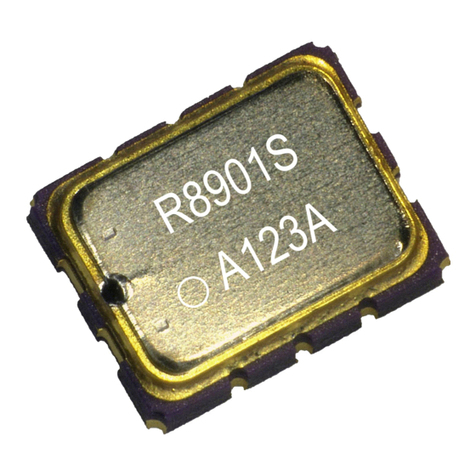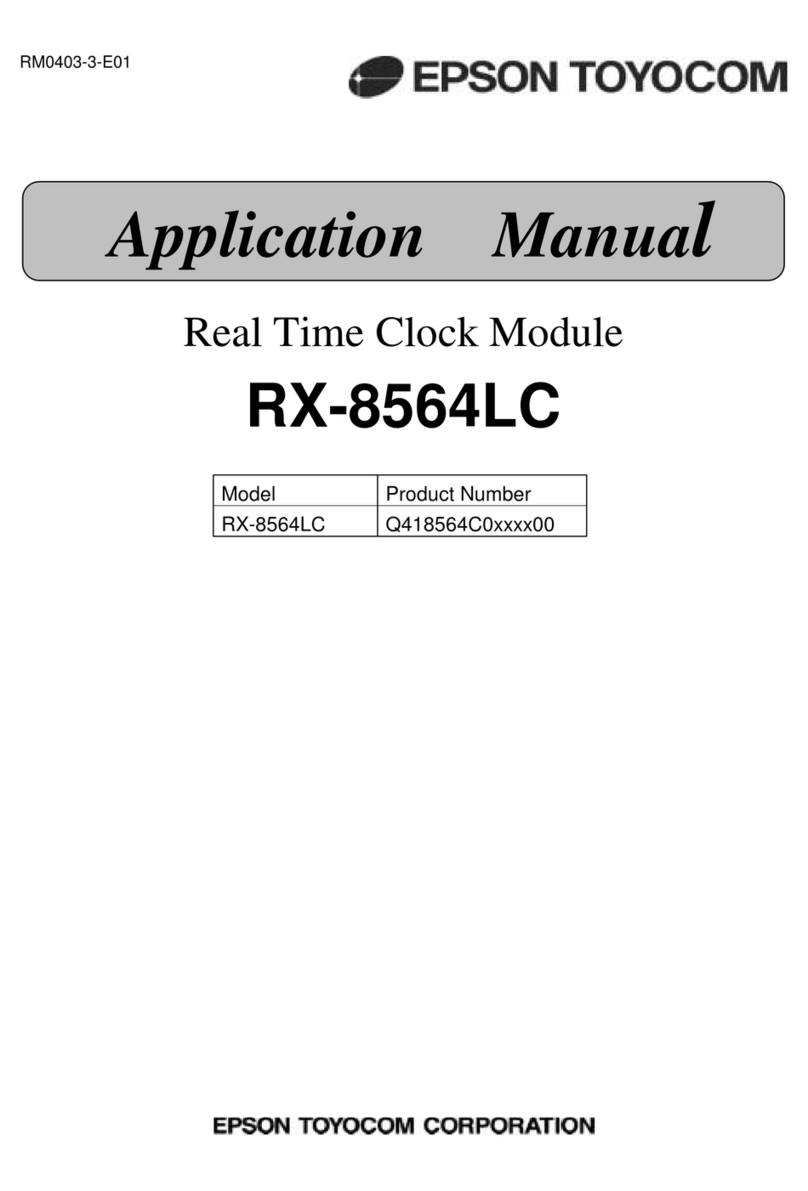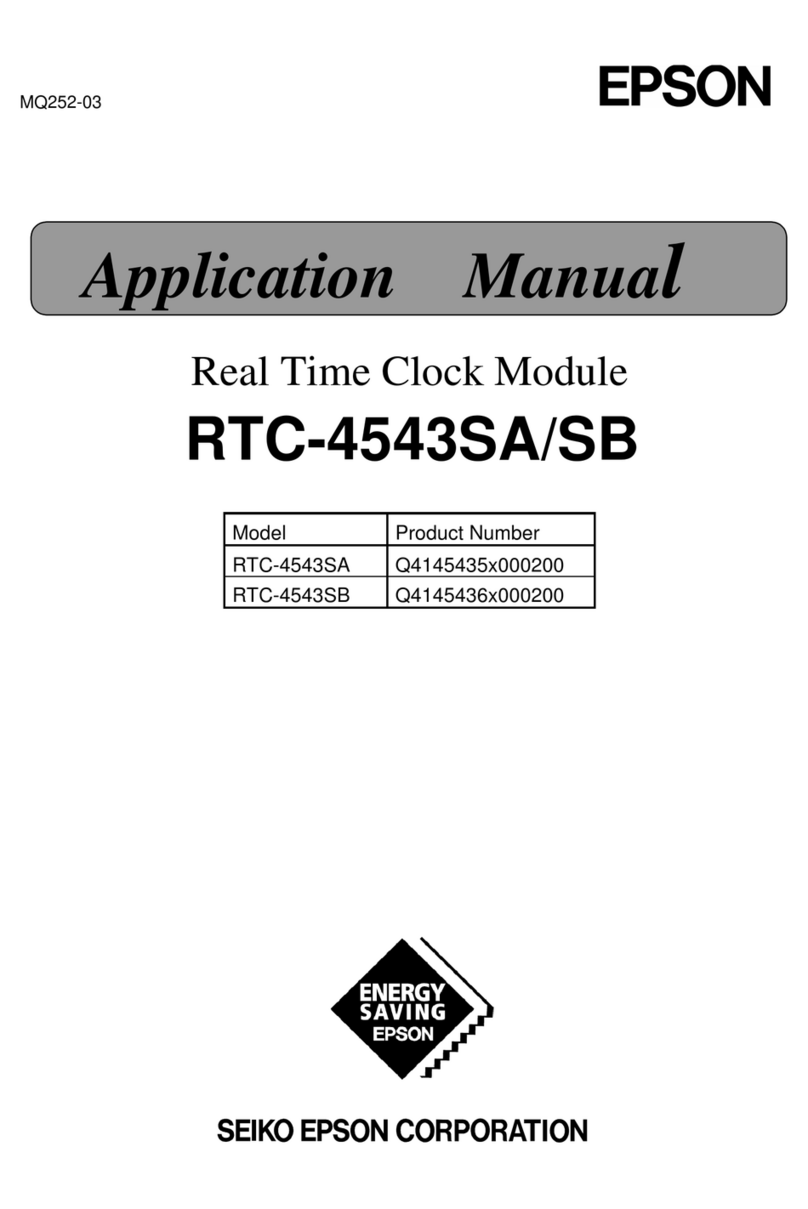
RX - 8801 SA / JE
Contents
1. Overview..........................................................................................................................1
2. Block Diagram .................................................................................................................1
3. Terminal description ........................................................................................................ 2
3.1. Terminal connections........................................................................................................................2
3.2. Pin Functions ....................................................................................................................................2
4. Absolute Maximum Ratings ............................................................................................. 3
5. Recommended Operating Conditions.............................................................................. 3
6. Frequency Characteristics............................................................................................... 3
7. Electrical Characteristics ................................................................................................. 4
7.1. DC Characteristics............................................................................................................................4
7.2. AC Characteristics ............................................................................................................................5
8. Use Methods....................................................................................................................6
8.1. Overview of Functions ......................................................................................................................6
8.2. Description of Registers....................................................................................................................7
8.2.1. Register table .....................................................................................................................7
8.2.2. Control register (Reg F)......................................................................................................8
8.2.3. Flag register (Reg-E) ........................................................................................................10
8.2.4. Extension register (Reg-D) ...............................................................................................11
8.2.5. RAM register (Reg - 7) .....................................................................................................12
8.2.6. Clock counter (Reg - 0 ∼2)...............................................................................................12
8.2.7. Day counter (Reg - 3) .......................................................................................................12
8.2.8. Calendar counter (Reg 4 to 6) ..........................................................................................13
8.2.9. Alarm registers (Reg - 8 ∼A) ............................................................................................13
8.2.10. Fixed-cycle timer control registers (Reg - B to C) ...........................................................13
8.3. Fixed-cycle Timer Interrupt Function...............................................................................................14
8.3.1. Diagram of fixed-cycle timer interrupt function..................................................................14
8.3.2. Related registers for function of time update interrupts. ...................................................15
8.3.3. Fixed-cycle timer interrupt interval (example) ...................................................................16
8.3.4. Fixed-cycle timer start timing ............................................................................................16
8.4. Time Update Interrupt Function ......................................................................................................17
8.4.1. Time update interrupt function diagram ............................................................................17
8.4.2. Related registers for time update interrupt functions. .......................................................18
8.5. Alarm Interrupt Function .................................................................................................................19
8.4.1. Diagram of alarm interrupt function ..................................................................................19
8.5.2. Related registers ..............................................................................................................20
8.5.2. Examples of alarm settings...............................................................................................21
8.6. Reading/Writing Data via the I2C Bus Interface..............................................................................22
8.6.1. Overview of I2C-BUS .......................................................................................................22
8.6.2. System configuration ........................................................................................................22
8.6.3. Starting and stopping I2C bus communications ................................................................23
8.6.4. Data transfers and acknowledge responses during I2C-BUS communications ................24
8.6.5. Slave address...................................................................................................................24
8.6.6. I2C bus protocol ................................................................................................................25
8.7. Backup and Recovery.....................................................................................................................26
8.8. Connection with Typical Microcontroller..........................................................................................27
8.9. When used as a clock source (32 kHz-TCXO) ...............................................................................27
9. External Dimensions / Marking Layout .......................................................................... 28
10. Application notes ......................................................................................................... 30
































